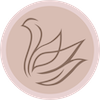by Olivier Hervet
Chinese artist Liu Wei’s ongoing solo exhibition at Shanghai’s Long Museum features a number of large-scale installations, sculptures and paintings that creatively contemplates the complexities of the world around us.
Opened in conjunction with what is now known as Shanghai Art Week—with the fairs West Bund Art & Design and Art021 at its centre—renowned artist Liu Wei’s solo show at Long Museum has been billed as the most important artistic event of an unsurprisingly quiet year. This is largely due to Liu’s stature as one of China’s most important contemporary creators. Besides solo presentations at Minsheng Museum and Beijing’s UCCA Center for Contemporary Art, the Beijing-born artist’s work has been included in group shows at the Venice Biennale (2005 and 2019) and New York’s Solomon R. Guggenheim Museum (2017), among others, propelling him to international recognition.
The present show, titled “Liu Wei: 散场/OVER”, is heavily influenced by the COVID-19 pandemic. Visitors entering the museum’s main hall are met by a colossal black structure tenuously hung from the ceiling, and grazing the floor from one of its angles. Reminiscent of the black monolith featured in the 1968 cult classic 2001: A Space Odyssey, it’s easily conceived as an allegory of the virus: gigantic yet anonymous, silent yet destructive. Aesthetically the work is a success. Furthermore, the artist has deftly filled the museum’s largest open space whilst setting the tone for the entire show. A second large-scale installation fills the lower floor. Titled 1098.1 Tons of Desert (2020), the work is comprised of 1098.1 tons of sand poured into a glass structure. According to the exhibition’s press release, it is a memento for the world’s principal zones of conflict and poverty, namely Africa and the Middle East. Facing the monumental work, I was more struck by imagining the chaos caused by a break in the glass’s structure, a sentiment in line with recent events. Higher than the onlooker and occupying most of a room, the structure is impossible to extensively comprehend in its entirety, another sign of the artist’s capacity to lithely mystify his audience.
A second group of works features aluminium installations spun off from an earlier series, Microworld, first exhibited at the 2019 Venice Biennale. Microworld No.3 (2020) consists in convex and concave stainless steel shapes encased in a glass cage-like structure uniformly lit from above by LED light. The entire installation seems to represent a process whereby giant molecules combine or separate themselves at random. This most basic of natural activities starkly contrasts with the evidently machine-made aspect of the different elements. The second installation, OVER (2020), lacks the glass cage but includes projections and moving objects. Featuring stars and spheres, it stands as a fabricated and free-standing solar system. Both installations are beautifully produced and display Liu’s knack for proportions and dramatic displays. But the contrast between the materials and scale on the one hand, and the processes represented on the other, also prompts the visitor to rethink associations between matter and form as well as between size and objects.
Yet the most unexpected works in the show are a group of sculptures titled Because They Can (2020). Also made of battered stainless steel, these are figurative sculptures of a lion suckled on by its cubs and of faceless human bodies painfully lingering in contorted poses. Though Liu’s earliest known works were paintings depicting an idealised city and wooden structures that recalled cathedrals, he had gradually abandoned figuration in both strands of his artistic production. With this new series, he operates a conspicuous change of direction though not without important qualifications. Whereas his earlier paintings featured a vision of Beijing as an almost oneiric and mythical place, Liu’s figures and animals seem to emerge from a dystopian industrial universe. No longer biological, they are churned out by monstrous factories to be static traces of a painful process. As with his other works however, the workmanship’s quality and the recherché elegance of the lines entice the viewer’s attention.
I was less captivated by paintings from the series Resurrection (2020). These modernist abstractions produced using a muted palette are touted as an “individual’s contemplation of nature” by the exhibition’s press release. While they are painterly and finely constructed, they lack the visual impact and experimental allure of the other works in the show. Two paintings complete the exhibition. One, from the artist’s Panorama series, depicts a cityscape in flashy colours criss-crossed by black and ochre lines. Cityscapes have been the most enduring part of Liu’s practice, and remain the most sought-after by collectors, with good reason. The viewer is both engulfed and hypnotised by the painting’s scale and magnificence. The other painting, from his The East series (2020), features two blocks of psychedelic pink and green laid across the length of the canvas. Though less arresting than his cityscape, it strikes a stunning contrast with the bare concrete of the museum’s walls.
Walking around the exhibition, visitors may at first be dismayed by the relative paucity of new works. But there is every reason to believe this is a deliberate choice on the artist’s part; Liu has produced plenty of more densely packed museum shows in the past and his plethora of studio assistants allow him to increase production if necessary. On this occasion however, he most likely chose to focus the audience’s attention on a few key pieces embodying the next steps of his artistic development. This focus is further enhanced by the monumental proportions of Long Museum and the synthesis between its light grey surfaces and the polished metal of many artworks. Liu has made this terse selection of works that both serve as a continuation of his previous endeavours as well as a pertinent response to this year’s current events.
Liu Wei: 散场/OVER
11 November 2020 – 17 January 2021
Long Museum, West Bund, Shanghai








